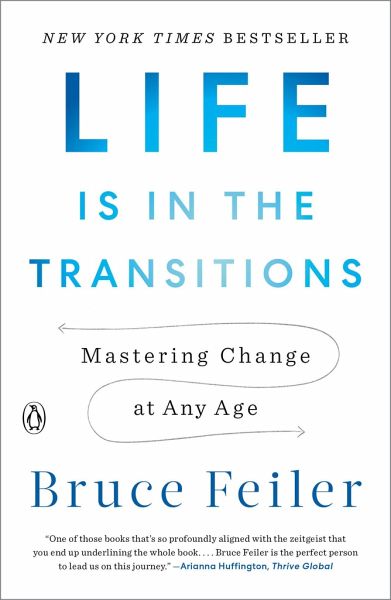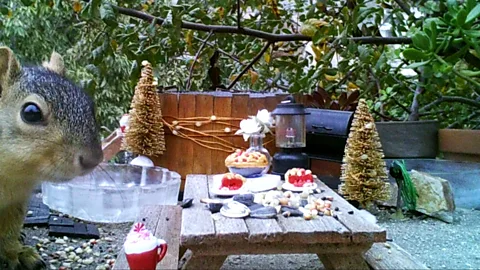🐿 Improving Your Resilience with Imagination Activism and Navigating "Lifequakes" (plus: Squirrel Influencers)
|
Hi hi, Right on cue, I’ve entered the creativity phase of my holidays. This morning, instead of heading to the pool, I found myself drawn to the living room, settling in with Pixel by my side and my laptop open, words flowing effortlessly. There’s something intoxicating, even liberating, about creating outside of professional obligations. It’s a reminder of how essential rest and distance from work are—not just for our well-being, but for our creative vitality as well. For the first time in months, I felt energized enough to revisit my eight (!!!) works in progress, and it was a joy rather than a chore. After emerging from a long, dark period, the return of these bursts of creative energy feels like a reawakening. It’s an incredible feeling, like seeing colors vividly after a season of grayscale. This summer has been a period of healing, a slow excavation of the sadness and despair that had accumulated over time. I might have once felt guilty about staying indoors on such a glorious summer day, but today, there’s nowhere else I’d rather be. Being surrounded by my works in progress feels right, almost necessary. It’s as if the time away has allowed these projects to breathe, to evolve, and now they’re ready for my attention again. This experience has underscored for me the importance of rest, not just as a break from work, but as an integral part of the creative process. In a culture that often equates busyness with productivity, it’s easy to forget that creativity thrives in spaces of stillness and leisure. Stepping back allows us to return to our craft with fresh eyes and renewed energy, reminding us that rest isn’t a luxury—it’s a survival imperative for anyone who creates. Embracing Lifequakes
Over the past several months, I've written many times about grappling with a profound sense of dislocation—a deep, unsettling shift within myself. It’s more than just a passing crisis or discomfort; it’s something more enduring, more seismic. Finally, I found the perfect word to describe this experience: lifequake. Coined by Bruce Feiler in “Life Is in the Transitions,” a lifequake refers to those intense periods of upheaval that shake us to our core. These aren’t the small disruptions of daily life, but full-scale quakes that fundamentally alter our sense of self, our relationships, and our direction. Unlike typical life transitions, lifequakes are unexpected and often unwelcome, demanding more than just a quick bounce back. Looking back, I realize my own lifequake has been building quietly for some time, converging into what feels like a tectonic shift. This isn’t just about a career change or a new life chapter; it’s a reconfiguration of my identity, my values, and my understanding of what it means to live a meaningful life. Lifequakes can be triggered by a range of factors—a career setback, a health crisis, the loss of a loved one, or even a global event like a pandemic. What they all share is their power to disrupt our internal and external landscapes. In a culture that prizes stability and linear progression, lifequakes can feel especially destabilizing. The expectation to quickly “move on” clashes with the reality that these seismic shifts require us to sit in discomfort, allowing the ground beneath us to settle into something new. Transitioning through a lifequake isn’t about “getting over it” or “moving on.” It’s about moving through it, letting the upheaval reshape us in unexpected ways. This process often involves grieving what has been lost and embracing what might emerge from the ruins. For me, this has meant letting go of past expectations and embracing uncertainty as a necessary component of growth. Culturally, there’s a growing recognition that lifequakes are not signs of weakness but opportunities for deep, transformative growth. The rise in conversations around mental health, resilience, and the importance of vulnerability reflects a broader shift in how we view these periods of upheaval. Movements advocating for slower, more intentional living also speak to a collective desire to find meaning and stability amidst chaos. As I navigate my own lifequake, I’m reminded that the goal isn’t to return to who I was before, but to emerge as someone new. The ground may still be shifting beneath my feet, but I’m learning to find balance amidst the tremors. This is the work of a lifetime—to embrace the quakes as a natural, if challenging, part of the human experience. In a world that often demands certainty, it’s liberating to accept that profound growth often happens in the midst of uncertainty. If you’re feeling the tremors of a lifequake in your own life, know that you’re not alone. This is your invitation to lean into the shift, explore the new terrain, and trust that on the other side, you’ll find a stronger, more resilient self. The Power of Imagination Activism
While deep into an aforementioned WIP—a project inspired by The Decision Book—I encountered the concept of imagination activism, created by Phoebe Tickell in 2022. This idea quickly resonated with me, offering a way to counter the overthinking and catastrophizing that seem so prevalent today. Imagination activism isn’t just about personal resilience; it’s about reclaiming our capacity to envision a better future. Cognitive science tells us that our brains operate in two primary circuits: one for linear, strategic thinking, and another for imaginative, exploratory thinking. Our culture overwhelmingly favors the first, leading to what some call a ‘crisis of imagination.’ Imagination activism offers a way out. It’s about intentionally creating space to engage our minds in possibility and creative thinking. By asking ourselves simple questions like What if things could go right? we can start to balance the negativity that often dominates our thoughts. To expand our imaginative capacity, we need more than just personal effort; we need systemic change:
Start by acknowledging your feelings, then ask yourself: What if the world could change for the better? What if there are solutions we haven’t yet imagined? Take time to vividly imagine a specific, improved future—where communities are more connected, climate solutions are embraced, or social justice prevails. As you do this, you're not just fantasizing; you're actively expanding your understanding of what's possible. The more you explore these positive visions, the more you challenge your assumptions about what can be done. This mental exercise opens your mind to new possibilities and sources of inspiration, encouraging you to think beyond current limitations. By spending time imagining how a different reality would feel, you start to shift your internal beliefs about what’s achievable. This doesn’t just lift your spirits; it primes your mind to recognize new opportunities and consider actions you might have dismissed before. In this way, imagination activism becomes a powerful tool for both personal resilience and collective change, helping you see the potential for a better world and motivating you to contribute to making it a reality. Article Round Up - What Captured My Curiosity This weekTake A Break, Have A BreakthroughIf you're not going to take my word about the importance of taking a break, maybe this story will convince you. As a linguistic nerd, I was very excited to read about Rishi Rajpopat, a PhD student at the University of Cambridge, who made a groundbreaking discovery. He decoded an ancient algorithm by Pāṇini, a 5th-century BCE scholar, that finally allows us to correctly generate millions of Sanskrit words—something scholars have struggled with for centuries. After months of trying to solve this 2,500-year-old puzzle, Rajpopat was on the verge of giving up. But instead of pushing through, he decided to take a break and enjoy the simple pleasures of summer—swimming, cycling, and meditating. It was during this time off that clarity finally came to him. Suddenly, the patterns that had been so elusive started to make sense, leading to a discovery that scholars had been searching for centuries. His story reminds us that in a world where we’re always encouraged to keep going, sometimes the biggest breakthroughs happen when we take a moment to pause and let our minds wander. As we all enjoy the slower pace of summer, it's worth remembering that stepping away can often be the key to finding the solutions we've been looking for. Wildlife InfluencersOver on the BBC, I enjoyed reading about how people across the globe are setting up backyard trail cameras and filming wildlife—sometimes even with elaborate dollhouse furniture as film sets—and sharing the resulting videos online. What started as a cute, creative hobby has grown into a movement with deeper implications, both for digital culture and conservation efforts. These cameras, originally popularized by hunters and researchers, have found new life among amateur naturalists and wildlife enthusiasts who are using them to uncover the secret lives of the animals living right in their own backyards. This phenomenon highlights a fascinating shift in how we engage with the natural world, particularly in the digital age. Online communities have sprung up around these critter cams, where enthusiasts share their videos, name their regular animal visitors, and even help scientists track and study wildlife. It's a reminder that technology, often blamed for disconnecting us from the real world, can also bring us closer to nature in unexpected ways. And as more people find solace in watching these animals go about their daily lives, it becomes clear that this simple act of observing nature—whether through a camera lens or a screen—can be a powerful antidote to the stress and anxieties of our fast-paced, digitally-driven lives.
Is Spotify Covering Up for AI Cover Artists?I'm also keeping an eye on how Generative AI is wreaking havoc on creative fields, including musicians. Recently, Slate had a great deep-dive into AI generated cover-songs of popular songs made by phantom bands that don't actually exist. It's a tangled issue, one that impacts artists, streaming platforms, and the public. Some believe (unconfirmed) that Spotify itself is engaging in these practices to pocket a larger percent of the royalties earned from playing streams. |
The Foush Report
Join Digital Anthropologist and Author Rahaf Harfoush for a weekly dispatch that covers culture, technology, leadership and creativity. Come for the analysis, and stay for the memes.
Hi! I'm currently in Dubai, where I had the chance to talk with Chief Technology Officers about something that feels increasingly urgent: the quiet but profound ways that new tools shape an organization’s culture. It's fascinating—each feature a tool has, each workflow it supports, impacts not just how work gets done, but how people connect, collaborate, and ultimately, how they feel within the workplace. Technology isn’t neutral; it has a personality, a set of values, even biases embedded in...
Hey you, Ooooooooof. I know I’m not alone in still feeling the weight of the American election results. There’s a particular kind of exhaustion that follows, the kind that comes not just from processing what’s happened but from seeing so clearly what’s ahead. Right now, I’m back at the Farm for a few days before I head out on my last round of trips for the year, and it’s here, in the quiet, that I’ve been able to lean into something that feels like hibernation. Not to escape, exactly, but to...
Hey you! I’m writing this from the San Francisco airport where I just ordered a coffee from a robot. Weird. I just wrapped up a visit with Google, one of my favorite clients, and now I’m waiting for my flight to Orlando, where I’ll be speaking to a room filled with 5,000 HR professionals. I'll be talking about the impacts of Generative AI on knowledge work—how these tools will change not only what we do but how we do it. Specifically, I’m interested in how they’ll shape the way we solve...


